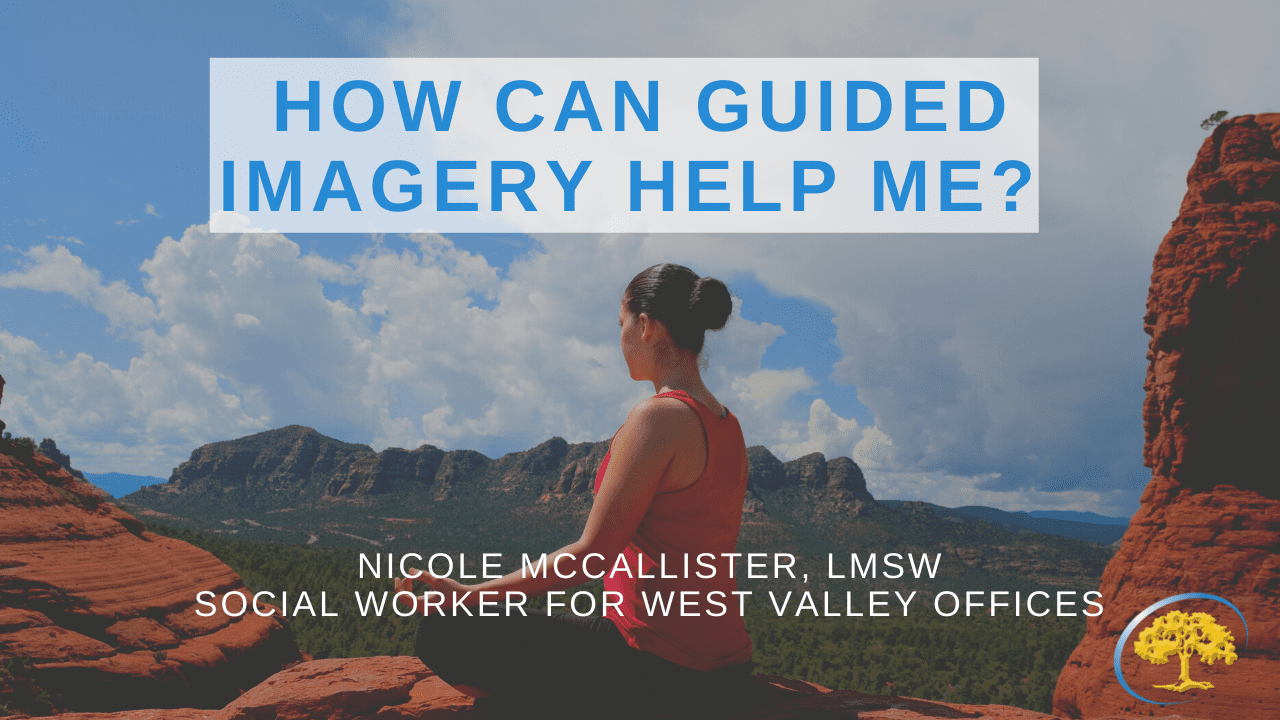
Posted 2 years ago
Can Guided Imagery Help Me?
Guided Imagery: Create harmony between the body and mind
Have you ever felt nervous about getting an MRI? I will admit that I have. The first time I had one, I panicked. I just could not relax enough to get through the procedure. I had to find a way. This is when someone suggested guided imagery to me.
What is Guided Imagery?
Guided imagery is focused relaxation that allows your imagination to create calm, peaceful images in your mind. It is a mental escape from the reality that involves all of the senses, body and emotions. Guided imagery can be a very useful coping skill and a way to find inner strength, courage and hope.
Imagery is a centuries-old technique that involves the deliberate use of the power of imagination to recreate one’s own mental images, sounds, smells and even tastes, to reduce anxiety and promote mind-body healing.
Where would you escape? Think of a place that makes you happy. This place should evoke clear and strong memories for you. Is it a cabin in the woods in Montana? Can you smell the pine trees in the breeze? Do you hear the rustling of elk during the rut in the woods? Can you feel the chill of the cool mountain air? Maybe your happy place is listening to a band play at a pub in Ireland. On the other hand, you can travel to the beach with me. My place is always somewhere tropical with coconuts and hibiscus.
This practice can be learned from books, self-help videos or licensed practitioners. YouTube has many videos that can be used to help guide you from the “present” to your happy place. Escaping the situation you are in that may be causing stress or anxiety to your body helps us cope with difficult situations. If you do search for videos on YouTube, make sure to click on one that does not include advertisements. You can also check out Ironwood’s video, “Take me to the beach!” In this video, guided imagery is explained then demonstrated on an imaginary journey to a tropical beach where you can feel the sand between your toes and wind against your face.
Examples of events or situations where guided imagery could “help you through” include MRI’s, CT scans, PET scans, infusion treatments, radiation therapy sessions, and dental appointments.
Related video: Scan Anxiety: Dealing with Anxiety about Cancer Scan
Research Suggests Guided Imagery Helps
Research on guided imagery has indicated numerous physical benefits to using this practice including: regulated heart rate, lowered blood pressure, improved respiratory function, decreased pain, minimizing symptoms of depression, reduced fatigued, and a balance between mind, body and spirit. Studies have shown that your body has the best potential to heal when it is in a state of deep relaxation and positive focus.
Many studies have been done specifically with cancer patients and the use of guided imagery. Numerous benefits specific to these individuals have presented from the ongoing practice of imagery.
-
In a study of breast cancer survivors, both live delivery and telemedicine-offered interventions reduced fatigue, cognitive dysfunction, and sleep disturbance
-
Decreased anxiety, depression, and body discomfort in gynecologic and breast cancer patients undergoing radiation therapy, and reduced stress and fatigue in patients undergoing treatment for thyroid cancer
-
Practicing guided imagery before surgery was shown to improve mood in prostate cancer patients undergoing radical prostatectomy
-
Research suggests it may also be effective in reducing shortness of breath in advanced cancer patients
-
Diminished Chemotherapy-Induced Nausea and Vomiting (CINV)
Guided Imagery Expectations
For guided imagery to be successful, it is important to understand that it is not a “one and done” practice. For your body to learn how to escape the present and achieve all of the physical benefits, guided imagery has to practiced. With enough practice, your body will be trained and ready for when you need to use your imagination.
How does it work?
In a typical session, the instructor helps foster a state of deep relaxation via breathing techniques, music, or progressive muscle relaxation in a quiet environment. Guidance is given to enable one’s own imagination to help relieve symptoms. Visualization exercises involve holding in mind images that bring about healing.
Important tips when practicing and preparing to use guided imagery: find a quiet place, sit in a comfortable chair that supports your posture, avoid laying down especially in a bed, silence cell phones and allow yourself at least 15 minutes. Once you are proficient, you’ll be able to use imagery in a real world environment that may be less tranquil. However, you will have learned how to quiet your mind and tune out what is happening in the real present around you.
About Nicole McCallister, LMSW

